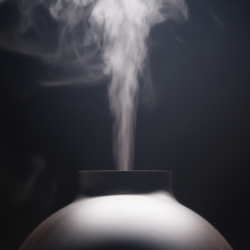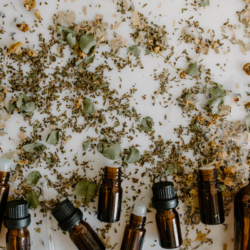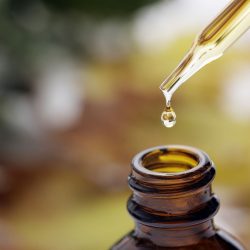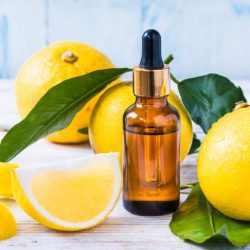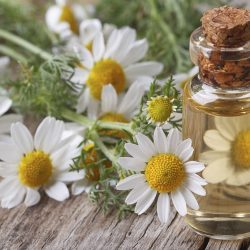True lavender, whose botanical name is Lavandula angustifolia, belongs to the Lamiaceae family. Its essential oil is obtained by distillation of the flowers.
A little history
Ancient texts say that lavender was burnt in the rooms where the sick stayed. In ancient times, it was also used to perfume the water in Roman thermal baths , which also benefited from the skin care properties of lavender. From purification to cleansing, lavender’s name reflects these two characteristics. Indeed, ” lavandula “, from the Latin“lavare“, simply means to wash.
In ancient times
There are references to lavender in ancient texts. Dioscorides ‘ De materia medica mentions lavender, but it is stoechade, which is found a little later in the Orphic Argonautics, an anonymous text from the 3rd century A.D. In fact, the therapeutic importance we attach today to fine and aspic lavender is equivalent to that attributed by the Ancients to stoechade, which has since fallen into relative oblivion.
This is undoubtedly why very ancient sources almost never mention the first two, or perhaps under the name of nardus as Pliny reports. Some ancient uses of lavender are known, even if we don’t really know what they are (this is the result of a confusion at least equal to that of a neophyte who would have difficulty distinguishing between the different lavandins and who, for the sake of simplicity, would give them the generic name of ‘lavender’).
We are told that lavender was burnt in the rooms where the sick stayed. On this subject, you may have heard of the washerwomen or night singers, spectres of women condemned to eternally wash their shrouds in the moonlight, in lost fountains, and whose main action, by analogy, is to wash their own peaches.
It’s relatively easy to understand the purifying virtues of True lavender, especially as scented plants have long been considered capable of warding off miasmas and parasites.
Middle Ages
Unlike sage, hyssop and rosemary, lavender does not give the impression of having been a panacea for every century. Albert the Great said little about it, Hildegarde more: “Lavender is hot and dry, and its heat is healthy. If you cook lavender in wine and often drink it lukewarm, you soothe the pains of the liver and lungs, as well as the vapours of the chest” Lavender is effective against a number of diseases. It repels both lice and… evil spirits. Hildegarde placed particular emphasis on the purity provided by lavender, which she called lavendula in the text: the scent of lavender clears the eyes and, thanks to it, “we obtain pure knowledge and a pure spirit”
In the 16th century, the Tuscan physician Matthiole, who seems to have been familiar with lavender essential oil, indicated it as an antispasmodic for the liver, spleen and stomach, as well as for cases of nervousness. Like Lémery, who later noted the action of lavender on the brain and nerves, Matthiole revealed a number of properties of lavender: a powerful antispasmodic and a regulator of the central nervous system.
Apparently distilled from the thirteenth century, under the name lavandula, until the sixteenth century, no distinction was made between fine lavender and spike lavender. However, the altitude should have informed the ancients. While stoechade lavender is a low-altitude plant, aspic lavender can be found between 400 and 1000 m, while officinal lavender climbs up to 1800 m. It is around 800-1000 m that aspic and fine lavender are found side by side, giving rise to a hybrid known as lavandin thanks to the action of bees.
Modern times
In the 18th century, lavender and other aromatic plants were fumigated during epidemics. So it’s no coincidence that it’s found in the vinegar of the four thieves.
In the 18th century, Vaucluse had some of the most beautiful wild lavender plantations. It was not uncommon to see itinerant distillers carrying their stills, sometimes on the backs of mules, and they continued to do so until the early 20th century.
Lavender essential oil sealed the fate of aromatherapy:
The story takes place in Lyon in 1910, in the laboratory of a young chemical engineer by the name of René-Maurice Gattefossé. An explosion burnt the chemist’s hand. The legendary story goes that he reflexively plunged his hand into the first container he could find, which was filled with lavender essential oil.
However, reality has been somewhat distorted, and the facts did not quite unfold that way. There was indeed an explosion and a burn, but this hand dipped in an entire vat of lavender essential oil is a false claim. Gattefossé was initially treated for his burn with traditional medication . Seeing no results, and noting that gangrene was setting in, he followed his intuition and rubbed lavender essential oil into his wounds. Until then, the young chemist had only been interested in the applications of essential oils in perfumery, but he had already laid the foundations for their curative virtues. He coined the term “aromatherapy” in 1928 and wrote numerous books on the subject, including the famous Aromathérapie – Les huiles essentielles hormones végétales in 1937.
At that time, lavender essential oil, which everyone knows today, if only for its smell, had not yet acquired its therapeutic credentials. But Jean Valnet, Fabrice Bardeau and Pierre Franchomme changed all that.
What are the pharmacological properties of True Lavender flower essential oil?
Known or presumed mode of action :
- Linalool is analgesic (action on muscarinic, opioid and dopaminergic receptors), anti-inflammatory (inhibits oedema induced by carrageenan), spasmolytic (by post-synaptic action mediated by cyclic AMP), inhibits the release of acetylcholine and reduces the opening time of ion channels at the neuromuscular junction (blocking Na and/or Ca channels), antioxidant (inhibits lipid peroxidation), sedative (even when inhaled), hypnotic, anti-convulsant (by acting on glutamate transport), hypothermic, local anaesthetic, antiviral against adenoviruses, etc
- Anxiolytic and antidepressant properties modulated by interactions with NMDA (N-methyl-D-aspartate) glutamate receptors and serotonin transporters
- Linalyl acetate (44%), which is hydrophilic, has a similar profile to linalool (31%) and is synergistic, sedative, anti-inflammatory, spasmolytic and anti-platelet aggregating
- Sympatholytic
An anxiolytic property:
A study has shown that lavender essential oil reduces plasma cortisol. Its marked anxiolytic effect is due to the inhibition of GABA-induced currents. It has a relaxing effect when inhaled and leads to a reduction in blood pressure, heart rate and skin temperature, indicating a reduction in vegetative arousal activity.
Its significant dose-dependent anxiolytic activity is comparable to that of lorazepam. It increases the sleep time induced by pentobarbital, without any significant effect on locomotor activity.
Sedative property :
Active on the central nervous system, lavender protects, calms and soothes. In particular, it reduces stress by lowering circulating cortisol. Calming and anticonvulsant, it also interferes with glutamatergic transmission.
Antispasmodic properties:
True lavender essential oil acts on the smooth muscles of the intestine;linalyl acetate reduces contraction of the vascular wall. A powerful spasmolytic, lavender has a muscle-relaxing effect, through a postsynaptic, non-atropine-like mechanism of action.
Antimicrobial properties :
The antifungal effect of the essential oil has been demonstrated in vitro against 50 strains of Candida albicans taken from humans. The antibacterial effect of lavender essential oil has been demonstrated in vitro against pathogens such as salmonella and staphylococcus aureus, while an extract has shown in vitro action against Helicobacter pylori, involved in stomach ulcers.
Effective against resistant staphylococci (especially in mixtures with other chemotypes), lavender is also antimicrobial against pathogenic flora, while respecting the resident flora (microbiota) when applied to the skin on associated areas.
Anti-parasitic effect :
True lavender essential oil is anti-parasitic against human parasites(Giardia duodenalis and Trichomonas vaginalis).
Insecticidal property :
Insecticide, effective against ticks, mites, lice and insects, especially moths.
Anti-inflammatory and pain-relieving properties:
The essential oil counteracts oedema and has a local anaesthetic action. Linalool has an analgesic action andlinalyl acetate is anti-inflammatory. Lavender essential oil therefore inhibits inflammation induced by lipopolysaccharides (LPS) by increasing the expression of (HSP70). The anti-hyperalgesic and anti-nociceptive effects of (-) linalool are due to its ability to stimulate the opioid, cholinergic and dopaminergic systems.
Other effects :
- Active on the ANS: Ʃ-
- Healing and cell regeneration
- Hypotensive tonic
- Massage has a positive psychological and immunological effect, increasing CD8 lymphocyte levels
- Lavender essential oil may help to modulate the immune and neuroendocrine systems by acting on indoleamine 2,3 – dioxygenase (IDO) and tryptophan metabolism
- Anti-hypertensive through sympatholytic effect
- Anti-allergic, inhibits mast cell degranulation
- Dose-dependent oestrogenic effect (cancelled by a specific anti-oestrogen) and anti-androgenic effect
Are there any precautions to be taken when using True Lavender essential oil?
- This essential oil is essentially active transcutaneously, so there is no benefit in using it orally.
- Beware of possible gynaecomastitising effects with prolonged use. Linalool andlinalyl acetate inhibit the production of testosterone, and should not be used long-term by males as endocrine disruptors.
- Not recommended for pregnant or breast-feeding women.
- For adults only.
- Prohibited in children and non-pubertal adolescents (possible cause of idiopathic pre-pubertal breast development in girls and boys).
- Contraindicated in cases of cancer or a history of hormone dependence.
- Authorised for external use on animals.
Medical literature and clinical trials:
- Huang MY, Liao MH, Wang YK, Huang YS, Wen HC. Effect of lavender essential oil on LPS-stimulated inflammation. Am J Chin Med. 2012
- Hawrelak JA, Cattley T, Myers SP. Essential oils in the treatment of intestinal dysbiosis: A preliminary in vitro study. Altern Med Rev. 2009
- Lis-Balchin M, Hart S. Studies on the mode of action of the essential oil of lavender (Lavandula angustifolia P. Miller). Phytother Res. 1999
- Woelk H, Schläfke S. A multi-center, double-blind, randomised study of the Lavender oil preparation Silexan in comparison to Lorazepam for generalized anxiety disorder. Phytomedicine. 2010
- Buchbauer G, Jirovetz L, Jager W, Dietrich H, Plank C. Aromatherapy: evidence for sedative effects of the essential oil of lavender after inhalation. Z Naturforsch [C]. 1991
- Sayorwan W, Siripornpanich V, Piriyapunyaporn T, Hongratanaworakit T, Kotchabhakdi N, Ruangrungsi N. The effects of lavender oil inhalation on emotional states, autonomic nervous system, and brain electrical activity. J Med Assoc Thai. 2012
- Sakamoto Y, Ebihara S, Ebihara T, Tomita N, Toba K, Freeman S, Arai H, Kohzuki M. J Am Geriatr Soc. 2012. Fall prevention using olfactory stimulation with lavender odor in elderly nursing home residents: a randomized controlled trial.
- Kumar V. Characterization of anxiolytic and neuropharmacological activities of Silexan. Wien Med Wochenschr. 2013
- Nicole Stevens, Jeff Dorsett, Alex DaBell, Dennis L. Eggett, Xuesheng Han & Tory L. Parker | Noy Kay (Reviewing Editor) (2017) Subjective assessment of the effects of an herbal supplement containing lavender essential oil on sleep quality: A randomized, double-blind, placebo-controlled crossover study, Cogent Medicine
- Lillehei AS, Halcon LL. A systematic review of the effect of inhaled essential oils on sleep. J Altern Complement Med. 2014
- Takahashi, M., Satou, T., Ohashi, M., Hayashi, S., Sadamoto, K., & Koike, K. (2011). Interspecies comparison of chemical composition and anxiolytic-like effects of lavender oils upon inhalation. Natural product
- Kuriyama H, Watanabe S, Nakaya T, Shigemori I, Kita M, Yoshida N, Masaki D, Tadai T, Ozasa K, Fukui K, Imanishi J. Immunological and Psychological Benefits of Aromatherapy Massage. Evid Based Complement Alternat Med. 2005
- Gostner JM, Ganzera M, Becker K, Geisler S, Schroecksnadel S, Überall F, Schennach H, Fuchs D. Lavender oil suppresses indoleamine 2.3-dioxygenase activity in human PBMC. BMC Complementary and Alternative Medicine 2014
- Lin PH, Lin YP, Chen KL, Yang SY, Shih YH, Wang PY. Effect of aromatherapy on autonomic nervous system regulation with treadmill exercise-induced stress among adolescents. PLoS One. 2021
- Elisabetsky E, Brum LF, Souza DO. Anticonvulsant properties of linalool in glutamate-related seizure models. Phytomedicine. 1999
- Silva Brum LF, Emanuelli T, Souza DO, Elisabetsky E. Effects of linalool on glutamate release and uptake in mouse cortical synaptosomes. Neurochem Res. 2001
- Peana AT, D’Aquila PS, Panin F, Serra G, Pippia P, Moretti MD. Anti-inflammatory activity of linalool and linalyl acetate constituents of essential oils. Phytomedicine. 2002
- Ghelardini C, Galeotti N, Salvatore G, Mazzanti G. Local anaesthetic activity of the essential oil of Lavandula angustifolia. Planta Med. 1999
- Henley DV, Lipson N, Korach KS, Bloch CAR. Prepubertal gynecomastia linked to lavender and tea tree oils. N Engl J Med. 2007
- Einav-Bachar R, Phillip M, Aurbach-Klipper Y, Lazar L. Prepubertal gynaecomastia: aetiology, course and outcome. Clin Endocrinol (Oxf). 2004


